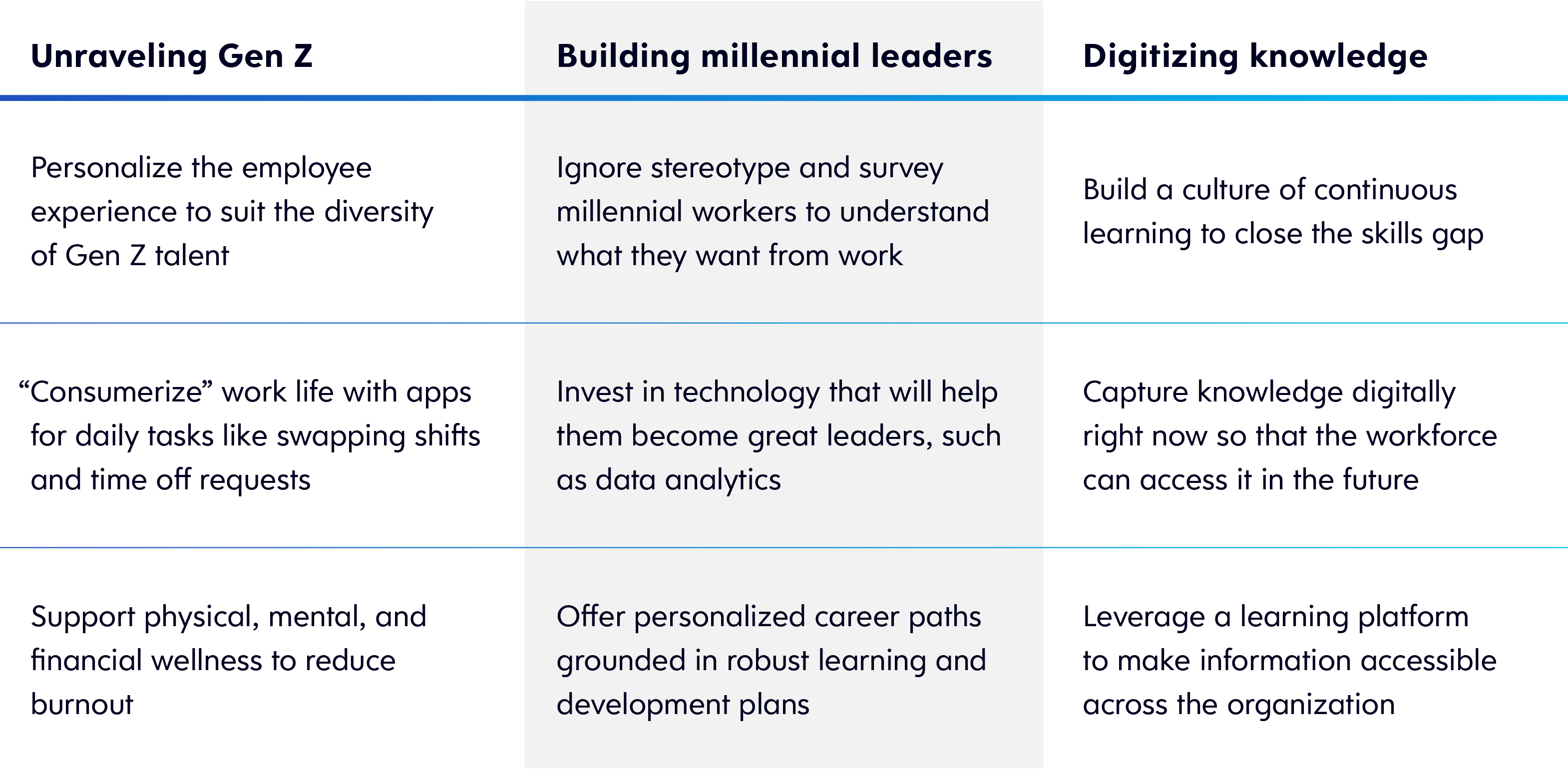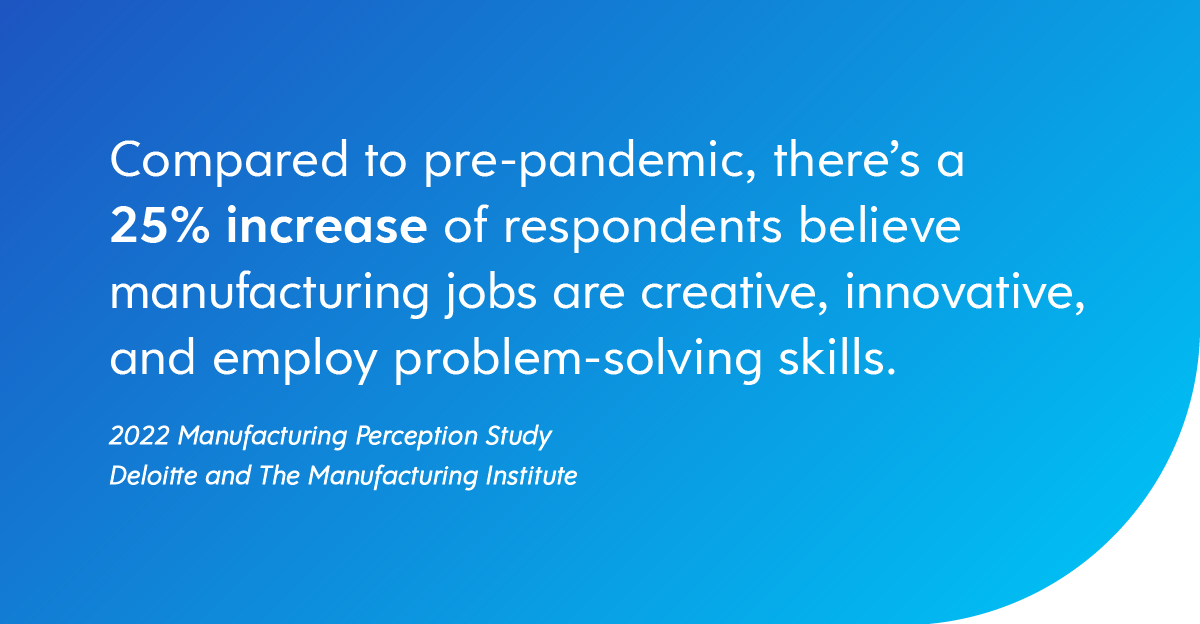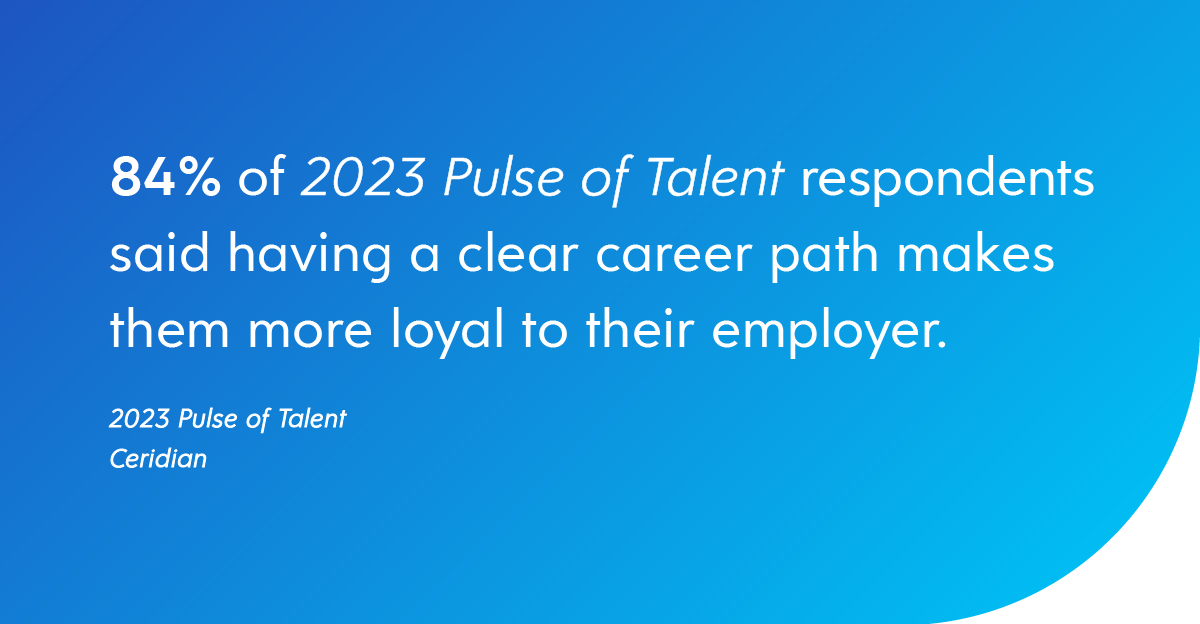The ultimate shift swap: Digital transformation can help manufacturers pass the torch between generations
Here's how investing in technology can help manufacturing leaders solve the skills gap, prepare for the Silver Tsunami, and tackle its employer branding problem for the next generation.

Table of Contents
By 2030, all baby boomers in the US will be age 65 or older.[1] As the “Silver Tsunami” washes over the manufacturing industry and workers retire en masse, it’s not just about filling empty roles. Without the right transition plan in place, organizations could see their top subject matter experts and leaders walk out the door with a wealth of institutional knowledge. When lessons learned aren’t captured and translated to the next generation, there’s an efficiency cost to be paid. And when effective leaders move on without someone equally great to fill the void, productivity and performance can suffer.
The potential negative impact of mass retirement is compounded by a widening skills gap driven by rapid technological advancement in the sector. The pace of change is only accelerating. To keep up, organizations must start investing in digital transformation to support their people in the new world of work. And now is the perfect time because, despite all of its challenges, the pandemic has created opportunities to build a more agile, engaged, and future-ready workforce.
Beyond branding
There’s nothing like a crisis to make people rethink their choices and core values. Many workers are placing a higher importance on job and financial stability now, even in the younger generations. The manufacturing sector is perfectly suited to appeal to younger workers, as it can offer a combination of high salaries, job security and growth, modern technology, and challenging problems they can directly help solve. But manufacturing has struggled with a branding problem among young people due to misconceptions about the industry including unclear career pathing.[2]
Manufacturers need to get in on the ground floor with new graduates, making an effort to be where they are and do a better job of employer branding. That being said, it’s not only about selling a vision of a modern workplace. You must also look inside your organization and back up branding efforts by creating a workplace that can not only attract younger workers but keep them. Technology will play a key role in building a modern employee experience, and it should be considered a critical piece of manufacturers’ digital transformation plans.
Three challenges and solutions


Challenge #1: Unraveling Gen Z
Gen Z is already somewhat primed to hear a positive outlook on working in the manufacturing sector. According to a cobranded Deloitte and The Manufacturing Institute 2022 Manufacturing Perception Study, there is a 25% increase of respondents who believe U.S. manufacturing jobs are creative, innovative, and employ problem-solving skills.[3] And there’s a 13% increase in respondents who are likely to encourage their child to pursue a career in manufacturing. The COVID-19 pandemic response has helped change this perception, as manufacturing proved to be a critical industry for producing essential equipment and helped sustain many jobs during the pandemic.
Another factor that could help manufacturers recruit Gen Z is their rising hesitancy towards the increasing cost of higher education. Enrollment in colleges and universities continues to drop with many students saying they are worred about the costs and associated stress.[4] While this can be attributed in part to the general uncertainty around education stemming from the pandemic, Gen Z’s disillusionment toward traditional education runs deeper than the COVID-19 crisis. There is currently $1.6 trillion in student loan debt in the US, and more than 40% of new and recent grads are underemployed in their first job, a disadvantage that often haunts them throughout their careers.[5]
Manufacturing has the opportunity to position itself as the ideal alternative to the traditional path of getting a degree, burdening oneself with student debt, and then struggling up the corporate ladder. Illustrating the point, NAM featured a story about a high school student who wanted to become a librarian, but realizing her expected salary wouldn’t match her debt levels she instead took part in a cooperative learning program founded by Toyota and run by The Manufacturing Institute.[6] The Federation for Advanced Manufacturing Education (FAME) program left the student with a two-year associate’s degree, a career path, and onsite experience – without the debt.


While programs like this one are a great way to attract Gen Z talent, the trickier part is retaining them. Doing so means unraveling what this generation values and expects from work. A recent EY study described Gen Z as a noteworthy generation that fully combines their physical and virtual realities, prioritizes transparency, and takes a pragmatic approach to wellness.[7] If the hallmark of this generation is authenticity, then the strategy to engage them at work has to involve a high degree of personalization. And for the generation that grew up digital, technology should be front and center.
Manufacturers should look to create an environment where Gen Z talent can consume everything from training, to mentoring, to scheduling on their phones and customize their experience to their own specific situation. Some great examples of technology that would appeal to Gen Z workers are self-service tools (i.e. shift swapping or requesting time off through a smartphone app) and learning platforms that personalize and embed learning into their work. Companies should also consider an automated and digital way to run pulse surveys to keep on top of the various drivers of engagement or disengagement among diverse Gen Z employees. This will have the added benefit of helping to engage the entire multi-generational workforce.
Wellness is another area of importance for manufacturers to consider when designing the right employee experience for Gen Z. When it comes to this generation’s top concerns, Deloitte found that Gen Z respondents were worried about the cost of living, long-term financial futures, and day-to-day finances.[8] And they are stressed as a result, with workplace mental health continuing to be a challenge. Financial wellness should not be overlooked in wellness offerings, as it’s the source of much of Gen Z’s stress. Technology such as on-demand pay, which gives employees the flexibility to access their earned wages between pay periods, and tools that help employees determine the best benefits package for their situation, are just two examples. Learning platforms can also be used to educate employees on how to manage stress and improve their physical and mental health.
Challenge #2: Building millennial leaders
Millennials will make up the largest percentage of the global workforce by 2025. For the past decade, talk of millennials has been prolific and often grounded in negative stereotypes – from their love of avocado toast to their tendency to job hop. Now it’s time for that conversation to mature, as the millennial generation ages into a different life phase, and increasingly into leadership roles. As a generation of baby boomers move toward retirement, understanding how to attract, develop, and retain effective millennial leaders to replace them will be critical.
The pandemic has caused people of all ages to rethink how they view their work, life choices, and core values. This is yet another reason why companies should forget what they think they know about millennials, rather than building engagement strategies on top of outdated stereotypes. Similar to Gen Z, a combination of their age and economic uncertainty may be pushing workers to crave stability, making job and financial security more of a priority.[9]
Millennials are also deeply embedded in a digital, tech-consumerized culture, and they expect to have the same experience at work. However, as they age, what this looks like may evolve. While for Gen Z employees, it might be about personalization and a seamless UX, for millennials trying to make their mark in leadership roles it may be more about how technology can make them successful.
A great example would be access to the right data to make good business decisions and manage their teams better. Millennial leaders will be focused on results over effort, and data plays a key role in that. They’re also the generation that democratized information, and that likes to have a voice – and they know the Gen Z talent they’re managing is the same. Tech tools like employee pulse surveys and flight risk analyses are just two of the tools that will help millennials grow into the leaders they strive to be.
The skills gap is still an enduring problem as the workforce increasingly needs advanced technical skills to keep up with the use of digital technologies across the sector. There’s opportunity for organizations that align with the millennials’ desire for growth and individual development to help them advance in their own careers. This restlessness can serve companies well if properly channeled through well-designed learning and development strategies. In a world where menial, repetitive work is being automated by technology, millennials’ focus on building skills and chasing meaningful work may actually benefit manufacturers by creating a more agile workforce – a value that millennial leaders will pass down to their reports. Nurturing your workforce talent pool with skills your organization will need In the future can improve retention as well – 84% of Ceridian's 2023 Pulse of Talent, a survey of 8,800 global employees, respondents said having a clear career path makes them more loyal to their employer.[10]


Challenge #3: Digitizing knowledge
One of the biggest challenges facing manufacturers with the impending Silver Tsunami is the loss of institutional knowledge stemming from years of experience on the job that will go out the door with baby boomers. When it comes to optimizing workforce efficiency, having the benefit of history is significant. Take for example planning a new project – imagine the wasted time and cost of exploring unsuitable opportunities or repeating past mistakes when someone could have simply told you what worked and didn’t work last time.
To guard against this loss of institutional knowledge, organizations should work to build a culture of continuous learning, and leverage technology to capture knowledge digitally. Much of the knowledge transfer activity that happens within an organization is done informally. It can happen through mentoring, through on-the-job experiential learning, or through employee collaboration channels. The right technology can provide an online tool to facilitate social learning between peers (i.e. employee sharing forums) and also capture tribal knowledge so that the entire organization can access it.
Planning ahead can also help to store knowledge from subject matter experts in the form of training modules, videos, and courses – before they retire or leave the organization. A robust learning platform will help to make that content accessible for employees who are planned successors of departing staff, as well as for new hires. Capturing knowledge through technology also helps to ensure business continuity in times of crisis, such as with the current pandemic. It means if an employee needs to step into a new role quickly, they can access the information they need to get up to speed right away.
Final thoughts
Manufacturers today have a key opportunity right now to correct the branding problem they’ve faced in the past and position themselves as the ideal career path for both millennial and Gen Z workers, while also capturing and retaining the expertise and knowledge of departing baby boomers. To be successful, though, this can’t just be a branding or recruitment exercise. It has to start inside the organization with an investment in the right technologies to support an agile, engaged, and forward-thinking workforce.
Sources
[1] 2020 Census Will Help Policymakers Prepare for the Incoming Wave of Aging Boomers, United States Census Bureau, December 2019
[2] Kate Magill, “Hiring Gen Z: How manufacturing companies need to pivot to attract younger workers,” ManufacturingDive, December 2022.
[3] Competing for talent: Recasting perceptions of manufacturing, Deloitte Insights and Manufacturing Institute, 2022.
[4] Courtney Brown, “Most Students Who Left College During COVID Want to Return – But Many Can’t,” The 74, July 2022.
[5] Elise Hammond, “How student loan debt became a trillion-dollar problem for Americans,” CNN, February 2023.
[6] NAM News Room, “I Will Always Be Able to Find a Job”: An Interview with a FAME Grad, NAM, July 2020
[7] Why Gen Z matters and what boards should know, EY, December 2022.
[8] The Deloitte Global 2022 Gen Z and Millennial Survey, Deloitte, 2022.
[9] Flexible, but stable: Randstad Workmonitor 2023, Randstad, 2023.
[10] The rise of the flexible career experience: 2023 Pulse of Talent, Ceridian, 2022.
This post was originally published on July 24, 2020 and was updated on June 21, 2023 for recency and to include new perspectives on the topic.
You may also like:
Ready to get started?

